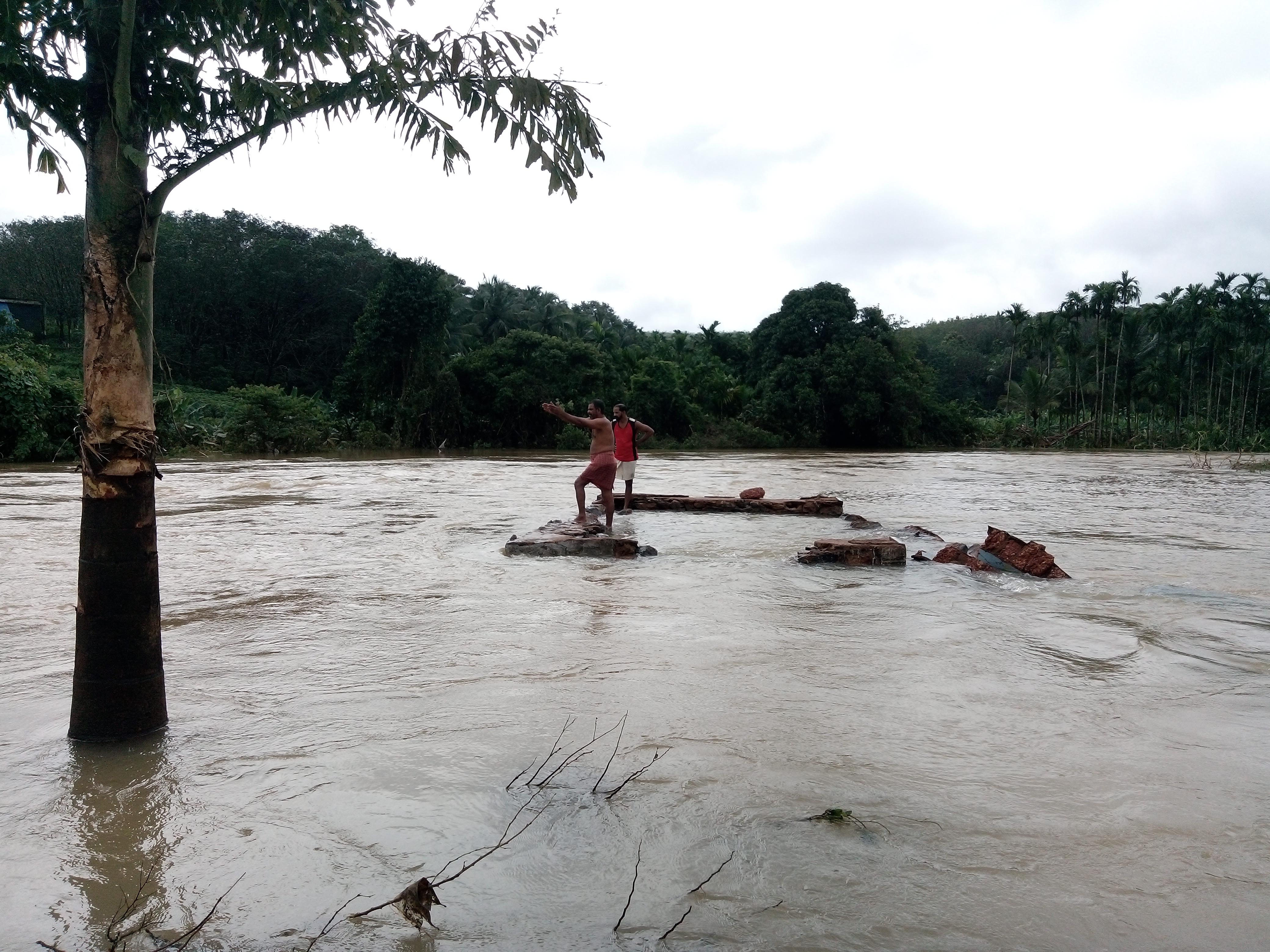In light of the devastating floods of August 2018, the state needs to introspect on its approach to development.

Written by Hans Nicolai Adam, Postdoctoral Fellow, Noragric
The worst floods in living memory
Disaster struck the Indian coastal state of Kerala at an unprecedented scale this month. The worst flooding in living memory inundated large parts of the state, in addition to causing landslides across the fragile Western Ghats mountain range. In the wake of the flooding, hundreds of people lost their lives, with many more injured and hundreds of thousands of people forced to evacuate to temporary shelters. The sheer scale of the disaster was captured in aerial footage that showed swathes of human settlements; forests and agricultural lands replaced by a turbid waterscape, with entire housing complexes swept away in landslides.
Amidst the gloom of this catastrophe, a remarkable sense of activism, solidarity and generosity characterized rescue and relief efforts. Fisher folk lent themselves to rescue efforts deep inland, people cutting across societal sections opened their doors to strangers in need, and donations poured in from across the state, country and abroad. These efforts were supplemented by state and central government activity, who mobilized significant resources (including all branches of the armed forces) to stave off the worst effects from the disaster.
What caused the flooding in the first place?
Heavy monsoon showers are not unusual over this period. However, according to the IMD (Indian Meteorological Department) between 8 and 15 August, rainfall was recorded at 250 percent over and above the long term average, and 42 percent over normal between 1 June and 18 August. An extraordinary deviation from the normal. As an emergency response to cope with the massive downpours, the shutters of all major dams in Kerala had to be opened to prevent structural breaches. As a result, torrents of water poured downstream and overwhelmed the already swollen rivers. Some commentators here pointed towards poor disaster management, by not releasing water gradually earlier. The incessant rains also provoked more localized flooding and numerous landslides – the latter responsible for the bulk of deaths reported. Could early warning have helped in this situation? Uncertainty in climate science and meteorology remains writ large and the predictability of such extreme events during the monsoon period remains low, as my colleagues and I pointed out recently (Adam, Mehta and Srivastava 2018).
Understanding Kerala’s present day context
As the flooding subsides, the true human, economic and ecological costs continue to emerge. Along with the shift from disaster relief to rehabilitation and reconstruction, questions need to be posed as to whether only excessive rainfall can be held responsible for the extent of the damages caused. It is important here to consider the socio-economic and ecological backdrop of the state. Kerala sits perched between the Arabian Sea and the Western Ghats mountain range (a biodiversity hotspot) on a narrow, densely populated strip of land. In many places, the distance from the coastline to the initial mountain slopes is less than 50 km. A total of 44 rivers drain water from the highlands, and provide sustenance to a mosaic of wetlands in between, which also act as buffer zones and floodplains. Famed for this unique ecology, diversity of landscape and culture, the state emerged as a major global tourist destination. It is also internationally acclaimed for its ‘Kerala model of development’, which has historically combined the ‘paradox’ of high levels of human development (high life expectancy, educational achievement and quality of life), with low rates of economic growth.
While the destructiveness of the flooding caught most people and public authorities by surprise, experts, social activists and indeed lay people sounded alarm bells long ago (Anand and Praveen 2018). Indiscriminate land use conversion of wetlands, fragile forest tracts and associated abuse of environmental planning principles and laws, such as the Kerala Conservation of Paddy Land and Wetland Act 2008, have been well-documented (e.g Chitra 2016). In Kuttanad, one of the worst affected areas in this year’s flooding, 63-76 percent of the total wetlands were filled up and diverted towards other uses since 1995 (Raj and Azeez 2009).
A human-induced calamity?
Unregulated development activities of booming tourism, real estate and plantation agriculture in the high lands across the state can be partly held accountable in this process too. The effects from these developments, ill-conceived construction activities (often in the periphery of burgeoning urban agglomerations) and rapacious mining relate directly to the intensity of the impacts from the flooding. For example, excessive soil erosion and landslips limited the holding capacity of major dams, and rampant construction and mining activities along precarious slopes furthered landslides, as experienced around the popular tourist destinations of Idukki and Munnar.
Indiscriminate land use conversion impeded the ability of wetlands to act as flood plains in many locales. In addition, the taming and exploitation of rivers contributed to soil deposit and solid waste accumulation that obstructed drainage channels along a highly urbanized coastal zone. The capital of Kerala state, Thiruvananthapuram, for instance, has not had a well-functioning, institutionalized waste management system for years, despite rapid urban growth. A number of committees and studies (including the Gadgil committee report) have testified to the ecological-sensitivity of the state in this context and argued for a different approach to development, but with little avail (Anand and Praveen 2018). In the aftermath of the floods, a widely circulated video footage on social media depicts a bridge across the Periyar river inundated not by water, but garbage – the same being directly returned to the river in clearance efforts.
Building back better
Much of the present narrative in the state hinges upon ‘nature’s fury’ and ‘diluvial rains’. However as much as incessant and extraordinary rainfalls are responsible for this disaster, it is a human-induced calamity as well. Climatic changes will likely add to this situation and increase the state’s vulnerability. In this context, it is indeed a wake-up call for Kerala’s approach to development. Its ecological sensitivities’, scope for climatic changes and pressing development demands need to find active consideration in the state’s development policy, planning approaches and indeed public discourse.
Kerala boasts of a long history of progressive social and environmental movements as well as innovative governance systems. As the memory of this disaster remains etched in public consciousness, it also provides an opportunity to ‘build back better’ in the face of increased awareness and public support. It is high time to incept a process of broad based engagement with all stakeholders – from civil society, scientist’s, political actors to lay people – on the shape that Kerala’s model of development will have to take in future, considering recent challenges. There also exist opportunities in this process not to repeat past mistakes and better balance developmental and ecological demands. These efforts will be especially important considering Kerala’s much touted social justice priorities. Ultimately it was vulnerable people, who live in the most exposed locales and stem from poorer sections of society that disproportionately bore the brunt from the flooding.
First published by the Institute of Development Studies
 Hans Nicolai Adam is a Postdoctoral Fellow at the Department of International Environment and Development Studies (Noragric) at the Norwegian University of Life Sciences. His research is focused on climate-related issues, including those in Kerala.
Hans Nicolai Adam is a Postdoctoral Fellow at the Department of International Environment and Development Studies (Noragric) at the Norwegian University of Life Sciences. His research is focused on climate-related issues, including those in Kerala.


